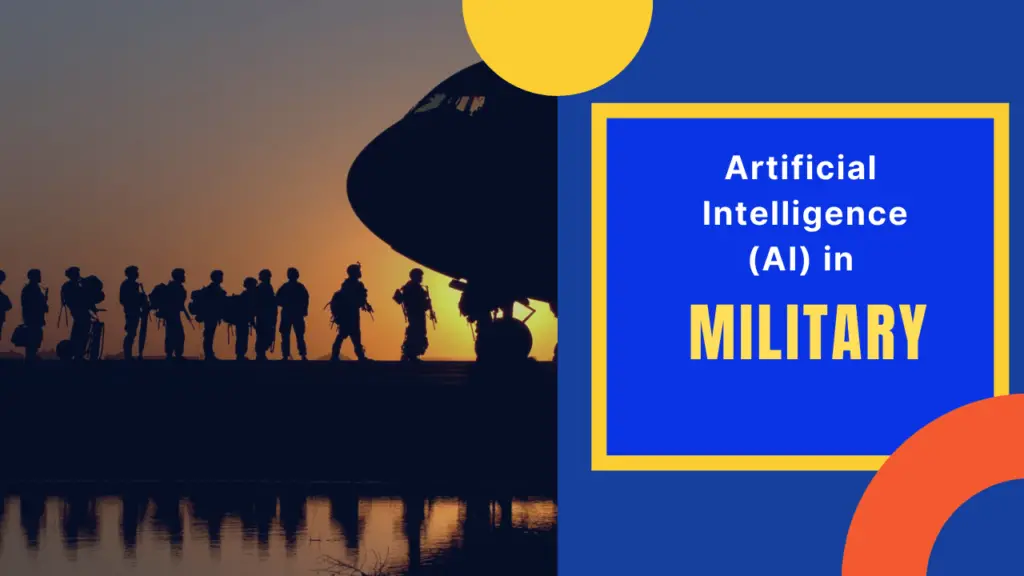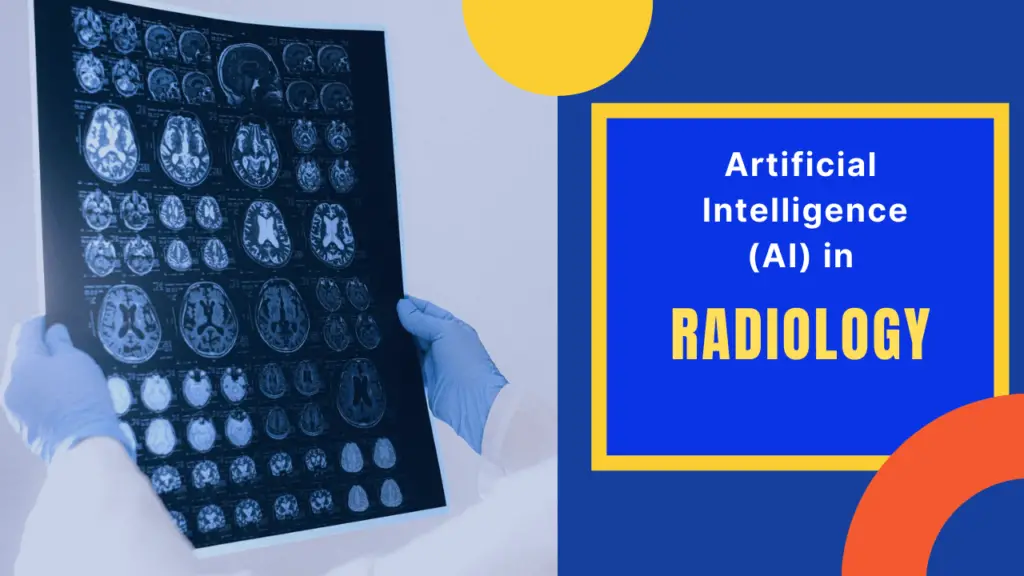The U.S. and other nations are currently developing different AI applications for a range of military functions. Artificial intelligence in the military becoming an important part of warfare. AI-powered military systems as compared to conventional systems are better able to handle the vast amount of data efficiently. AI greatly improves the self-regulation, self-control as well as self-actuation of combat systems because of its excellent decision-making capabilities. AI is used in most military applications, and increased research from military research agencies helps develop new AI applications to enhance the adoption of AI-powered systems in the military field.

Applications of AI in Military
The major military applications where AI will make advancements in the coming years are as follows:
1. Cybersecurity
The threat of cyber-attacks to military systems can cause loss of critical military information and lead to military system damages. However, AI-enabled systems protect computers, data, programs, and networks from unauthorized access. Moreover, AI-powered web security systems may record the cyber-attack pattern and accordingly develop counter-attack tools.
2. Warfare systems
Defense forces from several countries around the world incorporate AI into weapons and other warfare systems used on space, air, naval, and land platforms. Employing AI in these systems has resulted in efficient warfare systems that are less dependent on human input. It has also resulted in enhanced performance and increased synergy of warfare systems with less maintenance. AI has the potential to empower autonomous weapons for carrying out collaborative attacks.
3. Logistics and Transport
AI will soon play a critical role in logistics and support in the military sector. The transportation of ammunition, weapons, troops, and goods is an integral part of a successful military operation. Integration of AI with transport can reduce transport expenses and lower human manual efforts. It allows military fleets to detect anomalies as well as rapidly predict component failures.
4. Target Recognition
AI strategies can increase the accuracy of target recognition in complicated combat environments. These strategies enable defense forces to attain a comprehensive understanding of potential operation fields by analysis of newsfeeds, documents, reports, and other information. AI when employed in target recognition systems improve their ability to identify their targets’ position. AI-powered target recognition systems have several capabilities including forecasts of enemy behavior, aggregation of environmental conditions, analysis of mission approaches, and mitigation strategies. Machine learning is employed to track targets from the obtained data.
5. Warfare Healthcare
AI when integrated with Robotic Ground Platforms (RGP) can be used to provide remote surgical support in war zones. The AI-powered systems can effectively mine a soldier’s medical records under critical conditions and help in diagnosis. A good example of this is IBM’s research team which joined hands with the U.S. Veterans Administration for developing a clinical reasoning phototype called the Electronic Medical Record Analyzer (EMRA). This technology has been designed to use machine learning strategies for processing patients’ medical records and identifying as well as ranking their health problems.
6. Monitoring of Threats and Safety of Military Personnel
Monitoring of threats and situational analysis heavily depends upon ISR (Intelligence, Surveillance, and Reconnaissance) operations. These operations are used for processing information to support a broad range of military activities. Unmanned systems employed to carry out ISR missions may be sent on a defined route. AI-equipped with these systems can help military personnel in monitoring threats and improving their situational awareness. Drones can be integrated with AI to patrol border areas, recognize threats, and disseminate information about the threats to the concerned response teams. Using AI, therefore, increases the security of military personnel in warfare.
7. Processing large volumes of data
AI helps quickly process huge volumes of data for extracting useful information. AI helps in aggregating important information from multiple datasets and acquiring and summing supersets of data from different sources. This analysis allows military personnel to identify patterns and thereby derive correlations.
8. Combat Simulation and Training
Simulation and training involve multiple disciplines such as computer science, system engineering, and software engineering for constructing computerized models which acquaint soldiers with the different combat systems used in military operations. There is an increasing investment than ever in simulation and training applications. The US army conducts warfare analysis and has initiated sensor simulation programs. The US Navy has enlisted companies like SAIC, Orbital ATK, and Leidos for supporting their programs.
Benefits and Potential risks of Military Applications of AI
AI is among the technologies that are dedicated to changing the face of warfare in the coming years. AI-enabled autonomous systems will be able to conduct missions, automate tasks, and make better decisions as compared to humans. The applications where AI has been most successful are those that involve large quantities of labeled data such as Google Translate. However, there are certain risks associated with the incorporation of AI in military activities. Research has shown that under adverse conditions AI systems may be fooled, resulting in errors. Here are some of the benefits and associated risks of major military applications incorporating AI:
1. Strategic decision making
The benefits include:
- Precise and fast situational analyses.
- Offsetting prejudices.
- Rational behavior in critical situations.
The potential risks include:
- Low crisis stability because of accelerated decisions.
- Prejudices might be inherent in algorithms.
2. Training of Armed forces
The benefits include:
- Personalized training.
- Fair assessments.
- Promotions.
- More realistic exercises and simulations.
- Credible simulations of future technologies.
The associated risks include:
- Overestimation of AI-produced results.
- Culture as well as personnel problems because of the incompatibility between military culture and values held by military personnel.
3. Military Operations
The advantages include:
- Efficient data processing from multiple sources.
- Reduction of administrative work via forward-looking logistics.
- Lowered risks for troops via autonomous logistics.
- Improvement of support systems.
The potential risks include:
- Risk in the supply chain because of lack of inventories.
- Reduction of strategic stability.
- Unclear whether autonomous vehicles could be deployed in complex scenarios.
Bottom-line:
AI will play critical roles in future military applications as well. It will be used to enhance productivity, reduce workload, and increase operating speed much more than humans. Ongoing research will continue improving the resilience of AI technology.
My Recommendations: Master Deep Learning with These Specializations


